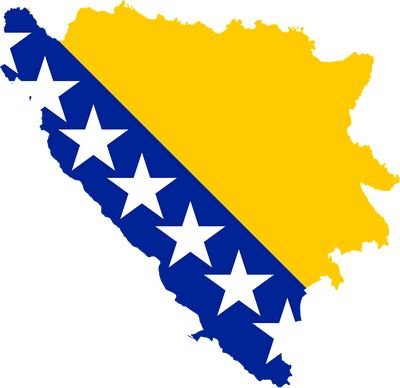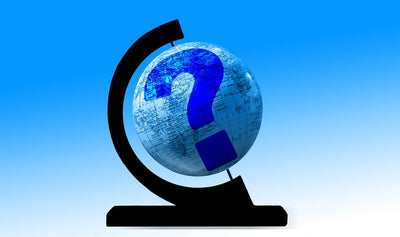Geocaching in Chernobyl and Pripyat, Ukraine
Geocaching in Chernobyl - actually we should say "geocaching in Chernobyl and in Pripyat" correctly, because there are caches in both places. But they are two separate places.
When coming into the zone, geocaching is usually not the primary reason for being there. There are caches here and they are very special caches. But not because of the puzzles or the hiding places. Because of the location, yes. It's the location, not so much the cache. And also the photo opportunities that this place offers.
We want to share our experiences with you in the blog text, maybe give you a few tips and make you want to visit the zone – and maybe even take away your fears.

The zone itself
The terms Chernobyl, Pripyat and Zone are often mentioned in the same breath. They are also related, but they are completely separate places.
On April 26, 1986 the reactor accident happened in Chernobyl. Chernobyl was a small town closest to the nuclear power plant. There were public facilities such as fire brigade, canteen for workers, reactor 1, 2, 3, 4. Reactor 5 and 6 were under construction at the time of the accident.
Prypiat, on the other hand, is now the ghost town where the inclined geocacher can find many a lost place. Well-known images are the Ferris wheel, the bumper car or the kindergarten. Pripyat was founded only in 1970 as a "model city" for nuclear power plant workers. At the time of the disaster in 1986, almost 50,000 people lived in Pripyat, including 15,500 children. The city should continue to grow with the construction of reactors 5 and 6.
"The zone" is a generic term for a radius of 30 km around the reactor, which is guarded today and which can only be entered under certain conditions. The inner circle is a 10km zone with additional controls at the entrance.
Geocaching in Chernobyl - planning a visit
If you plan to visit the zone, do not rely on getting 2 more cookies through the hotel reception on the day of your visit. Those who arrive with more than 2 people - and everyone else too - are well advised to take care of the tour in advance.
This is of course very easy thanks to the Internet. For example, if you enter “Kyiv” as the location in Get your Guide, you will get a number of suggestions for visiting the zone. And here lies the art of choosing the “right” or “suitable” provider. The services differ not only in price.
Treffpunkt
All providers have one meeting point at the main train station in Kyiv. The advantage: you can easily get here from any hotel. The disadvantage: You sit in a bus with many other tourists, German is rarely spoken, but English is not always spoken. AND: of course no cache stops are inserted. You can certainly take one or the other cache with you here, but it is much easier in a bus full of geocachers. From a group size of 15-20 people, it is definitely worth looking for an agency that offers an extra tour. With a group you will also be picked up at the hotel and brought back.
Agencies
There are a few of these on the market. I was already on the road with one of the "usual" agencies in a motley bus. We have always chosen Helianth Tours for our cacher tours. Always, i.e. we are super satisfied and why should we change anything? They offer a fair price for good service. The performance actually consists of a full organization. From the drive to the edge of the zone, the prior registration of the group, the organization of a guide (see below), the checks and the return trip.
Of course, you can also drive to the zone in your own car or with a rental car (arrange in advance! But usually no problem).
Guide
Yes, despite an agency that takes you to the edge of the zone, you still need a local guide. Completely free movement in the zone is NOT possible. So you can't drive in and then stop, get out, walk around, cache as you wish. Luckily, the caches are usually located at such prominent points that you can reach a large number with the "normal" guide anyway. This guide must be certified and approved. Now there are two options: either the agency has specialized and has its own trained guides. You can tell when you meet a small bus (9-seater) in the zone and the guide is wearing jeans and a sweater. Large agencies or private individuals choose the local guides who board at the checkpoint. You can usually recognize these by larger groups and a somewhat "military look" - camouflage pants and jacket, sturdy boots, etc. And as always, you can be lucky or unlucky one way or the other. Although we have always had great guides so far - of course you have to get involved with the guide, especially follow his instructions and also perceive the political coloring as such. Then you can live with it very well.
Rental car
As already mentioned, you can of course also drive a rental car from Kyiv to the edge of the zone. You can't get lost, there is now a cache directly at the control station. And actually only one road leads to the zone. However, a local guide must be booked at the checkpoint for the 30 km zone. Preparation is also necessary here. This either needs space in the car or you can also change to minibuses from the zone. This is certainly associated with a fee and should be ordered in advance. So far, the agency from Kyiv seemed easier to us.
Time in the Zone
For the time you have available in the zone, there is a very simple rule that applies to all agencies, to all private individuals, simply to all visitors: everyone has to be outside by 6 p.m.! Except for those who have booked an overnight stay in the zone.
From Kyiv to the checkpoint at the 30 km zone it is about 130 km, which takes about 2 hours. So if you leave the hotel at 8:00 in the morning, you will be in the zone around 10:30.

2-day visit or even longer
There are some specialized providers who offer overnight stays in the zone. You should even be able to stay in the zone for up to 7 days.
The special feature is that you don't have to leave the site at 6 p.m., but spend the night in a hotel in the zone. Groceries can be bought in a small supermarket.
However, if you think you can explore the buildings in Pripyat with a flashlight in the evening, you are wrong. Also on this tour it is not possible to move freely in the zone, you will be locked in the hotel at the curfew. There is also nothing more to see than on the 1-day tour, you just start later and have a little more time at the individual points. So far we have never found this necessary and have only undertaken day trips.
Geocaches in the zone
You will look in vain for special caches or special cache containers. The specialty is simply the location. Usually it's small film boxes or pipette boxes that you can find here. The hiding places are usually not difficult to find, it shouldn't be too conspicuous.
Gear
One more thing about "gear" for the day in the zone.
It is important that all participants have their passport with them. Namely the passport that you gave when booking. The group is always registered in the zone – at least with our agency Helianth. In the morning, a special person comes to the hotel and checks the list of passports and the people who belong to them. We think the procedure is very good, if a transposed number or similar has crept in, there is still enough time to inform the checkpoint at the 30km limit. The inspector would then take care of that for us. There are also agencies where this is only done at the border, which can lead to a longer waiting time if there is a small mistake. The fee for this "additional inspector", which you only see in the hotel in Kyiv and then not again, is reasonable and affordable.
From the checkpoint you also need long trousers, long sleeves and sturdy shoes. Especially in warm weather, the long sleeves go under. You can buy sweaters at the checkpoint and the guide also has one or two jackets available. If you don't like that, bring your own jacket.

Since we have the bus to ourselves for the whole day - and that's the case with each of the variations mentioned - a backpack can also stay here.
You should also have enough food and drink in your backpack. If you haven't chosen to have lunch in the zone - which takes well over 1 hour of your time - then there are no other shopping options. So, in Kyiv already stock up. The supermarkets are really cheap. Picnics are not allowed in the zone. This means that food intake in the form of eating and drinking is only possible on the bus. But since you keep going from station to station, this is not a problem.
Information
It is not always easy to get "uncolored" information about the reactor accident and the days that followed. For home preparation, youtube has some solid posts. "The true story of Chernobyl" offers a good first overview, even if the film contribution is now out of date.
Almost all providers accompany the bus trip to Chernobyl with a film that “must” be shown on the bus. It is a good way to get in the mood for the day and the almost 2-hour bus ride should definitely be used for watching and listening.
Then, of course, the organization with which you set off has information ready and the local guide, who later accompanies the group on site, tells a lot about the locations and what happened here during the course of the day.
In Chernobyl/Pripyat you rarely come across signs that explain something. Everything relies on the guide, who can impressively describe the places and the processes. You're not in a museum here and you don't have the feeling of it for a minute. In the city of Prypiat at the latest, there is a much greater feeling of lost place, where one tends to forget the cause of this. And the next moment you get goosebumps when the guide talks about the evacuation of the kindergarten.
Changes
In March 2017 I entered the zone for the first time, I'm preparing my fifth tour right now. Of course, nature changes, as you can imagine. Green is growing and reclaiming areas. But what I find more frightening/unusual/amazing is how buildings and processes are changing here.
On my first visit, the reactor was surrounded by ONE sarcophagus. Of course, today it is more beautiful, has a silvery sheen and looks very harmless from a distance. None of the geocachers taking the photo on the virtual thought about how close they actually were to it. On my first visit, there was real life here. Many, many workers in overalls were on the site, reactors 1,2 and 3 were running. At the time, I was amazed at how many companies are located in the immediate vicinity. Today the first three reactors have been shut down, it has become quite quiet on the streets around reactor 4.
Things are also getting quieter in Pripyat. The basement of the hospital is sealed, some houses are marked as in danger of collapsing and can no longer be entered. The security service makes its rounds. No longer a good zone for urbexers and other groups (there are still hobbies outside of geocaching). Certainly useful. For geocachers, however, the rules have become looser. More and more caches will be left in the zone. And apparently events are now also possible here. It's not clear to me because of the entrance fee and the formalities alone, but we have seen events on the geocaching map that were published. Whether we would do that now – the time on the day is short anyway. Then rather visit a cache in the piano shop or in the hospital. There are definitely plenty of great places to visit and take photos.
If you come more often, you can clearly see the changes. On the other hand, Ukraine has discovered great tourism potential here and more and more places are being opened up for visits. For example, the radar station, which was actually still running under "secrecy" when I first visited it. And yet: During the last visit, the discussion with the guide arose as to how long we could continue to visit here. The ravages of time gnaw at vacant buildings in particular....
Conclusion

Despite many dissenting voices about health and radiation, I still think a visit to the zone is a special experience. Not only because of the many lost places. In any case, the day always leaves a special atmosphere in my groups. Slightly depressed, many discussions arise. Could the same thing happen again today? What would be different today? Social media in particular also plays a major role here. During the course of the day you always feel for the people who were evacuated here in 1986, suffered damage to their lives or even today believe that nothing really happened. A visit to the Chernobyl and Pripyat zones changes something for every visitor. May we learn from it!







Leave a comment